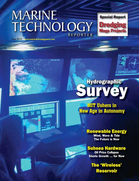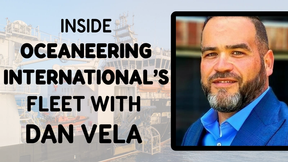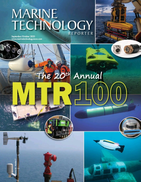Dredging Mega Projects
Posted by Irina Tabakina
According to the International Association of Dredging Companies’ (IADC) Dredging Figures 2013, the global dredging turnover grew nearly 3% in 2013, nearly hitting the $13 billion mark. More significantly, even in bad economic times the industry recorded solid growth. Growth of 13% to be exact, from $11.4 billion in 2008 to $12.97 billion in 2013. Following is a statistical abstract of the most recent data from the world of dredging. IADC celebrates half a century with the publication of a special limited edition book, ‘Beyond Sand and Sea.’ Full details can be found on page 49.
Drivers for Dredging
1. World Trade
As the majority of the world’s goods transport via ship, it stands to reason that dredging need correlates closely with world trade. Figure 1 indicates a long-term, positive trend in World trade more than doubling over the last 30 years. In addition, ships are getting bigger, and ports are becoming more snarled than ever. The need for dredging is central to maintaining and building port capability.
2. Urban Development
The world’s population continues to grow, and so too does the push toward expanding population centers on the world’s coasts. According to statistics cited in “Dredging Figures 2013,” urbanized land is likely to double by 2030 as another 1.5 billion people migrate toward cities. In 1950 about 30% of the world’s population lived in urban areas; today that number is 54%. In 2050 an estimated 66% of the world’s population will live in urban areas.
3. Coastal Protection
Increasingly severe weather has put many coastal areas at heightened risk for significant damage from wind and waves when disaster inevitably strikes, as became alarmingly clear when Hurricane Sandy wrought damage in Manhattan in the autumn of 2012.. Dredging activities can go a long way in helping to shore up shorelines.
4. Offshore Energy
As population, Urban areas and world trade grows, so to does the need for Energy. It is estimated that 5% of the world’s energy finds must be replaced every year, and increasingly companies are searching in deeper waters, further from shore, to score major new energy finds. This hunt for fossil fuels demands a lot of dredging, to prepare the seabed to digging trenches for pipeline and cabling.
5. Tourism & Leisure
Tourism along coastlines and beaches remains a growing phenomenon, from the small personal watercraft to the mammoth cruise ships roaming the world and further stretching port facilities and infrastructure. In addition, the replenishment of beaches from weather-related erosion is ongoing. But curiously, while tourism shows a steady growth of 4 to 5% over the last 5 years, dredging related to tourism has decreased from 4 to 3% according to Dredging Figures 2013.
‘Beyond Sand and Sea’
A Limited Edition Book
To celebrate a half century of maritime infrastructure construction, the IADC members dug deep into their archives to gather photographs of 50 major projects realised over the last 50 years. These photos and descriptions illustrate vividly that dredging is far more than excavating sand and placing it in the sea. The book defines where the dredging industry started and how far it has evolved into a supplier of essential maritime infrastructure for land development, the oil and gas offshore industry, wind energy, ports and harbours and coastal protection in these times of climate change.
BOOK INFORMATION
Format: 25 x 25 cm, softcover
Language: English
Price: € 24.95 (*)
Information: www.iadc-dredging.com
(*) Excluding shipping costs (€ 6.95 for the Netherlands, € 13.00 for the EU and € 25.00 for the rest of the world). 6% VAT may be charged on the book and shipping costs depending on the postal address and whether or not you are a business.
(As published in the June 2015 edition of Marine Technology Reporter - http://www.marinetechnologynews.com/Magazine)



 August 2025
August 2025



